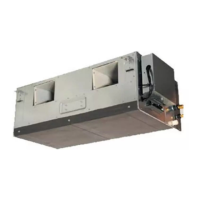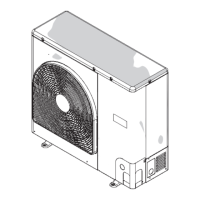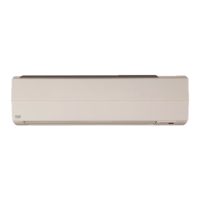Why my Toshiba RAV-SM1404UT-E does not run?
- EEileen RuizAug 28, 2025
Check if there has been a blackout, if the circuit breaker has blown, or if the protective device has been activated.

Why my Toshiba RAV-SM1404UT-E does not run?
Check if there has been a blackout, if the circuit breaker has blown, or if the protective device has been activated.
How to clean dust and dirt from the heat exchanger of a Toshiba RAV-SM1404UT-E?
If you notice dust or dirt clogging the heat exchanger of your Toshiba Air Conditioner, wash the heat exchanger to remove the blockage.
How to clean dust, dirt, and scratches on the ornamental panel and louvers of a Toshiba Air Conditioner?
If you find dust, dirt, or scratches on the ornamental panel and louvers of your Toshiba Air Conditioner, wash them to remove contaminants. If there are scratches, consider applying a repair coating.
What to do if there is dust or dirt clogging and drain contamination on the drain pan of my Toshiba Air Conditioner?
If you notice dust or dirt clogging the drain pan of your Toshiba Air Conditioner, or if you see drain contamination, clean the drain pan. Also, ensure that the downward slope allows for smooth drainage.
Why is my Toshiba RAV-SM1404UT-E Air Conditioner not cooling or heating the room?
If your Toshiba Air Conditioner isn't cooling or warming the room, several factors could be at play. Make sure that the air intake or discharge of the outdoor unit isn't blocked. Check if any doors or windows are open, or if the air filter is clogged with dust. Also, verify that the air volume isn't set to 'Low,' the operation mode isn't set to 'Fan,' and the setup temperature is appropriate. If any of these conditions exist, check again after correcting them.
What does CPU-CPU communication error mean for Toshiba Air Conditioner?
| Brand | Toshiba |
|---|---|
| Model | RAV-SM1404UT-E |
| Category | Air Conditioner |
| Language | English |
Safety precautions and warnings related to the installation process of the air conditioner.
Important safety guidelines and warnings to follow during the operation of the air conditioner.
Safety advice concerning the movement, repair, and general handling of the air conditioner unit.
Identification and description of the various parts of the indoor unit.
Identification and description of the various parts of the outdoor unit.
Explanation of the indicators and symbols displayed on the remote controller screen.
Detailed explanation of the buttons and functions available on the remote controller's operation section.
Steps for initial setup, preparation, and requirements before operating the air conditioner.
Details on the different types of timer operations available: OFF, Repeat OFF, and ON timer.
Guidance on adjusting louvers for optimal cooling and heating performance.
Step-by-step instructions for setting and adjusting the wind direction and swing.
Procedure for selecting individual indoor units to adjust wind direction.
How to configure different swing types for the air conditioner louvers.
Procedure for locking the louver position to prevent unwanted movement.
Instructions for enabling and adjusting the power saving mode settings.
Tips for maintaining comfortable room temperature efficiently.
Essential checks before operation and understanding the protective device.
Instructions for cleaning the air filters to maintain performance.
Guidelines for cleaning the indoor/outdoor unit and the remote controller.
Recommended periodic checks and procedures for storing the unit for extended periods.
Information on protection features, restart procedures after power failure.
Details on how the heating operation works, including preheating and warm air control.
Explanation of the automatic defrosting process during heating operation.
Specifies the recommended operating temperatures for cooling, dry, and heating modes.
Factors to consider when choosing a location for installing the air conditioner.
Guidelines and warnings for electrical wiring and connections during installation.
List of locations and environments where installation is not recommended.
Initial checks to perform when the air conditioner is not operating correctly.
Description of normal operational sounds or minor issues that are not considered failures.
Guidance on diagnosing and resolving specific symptoms or error conditions.












